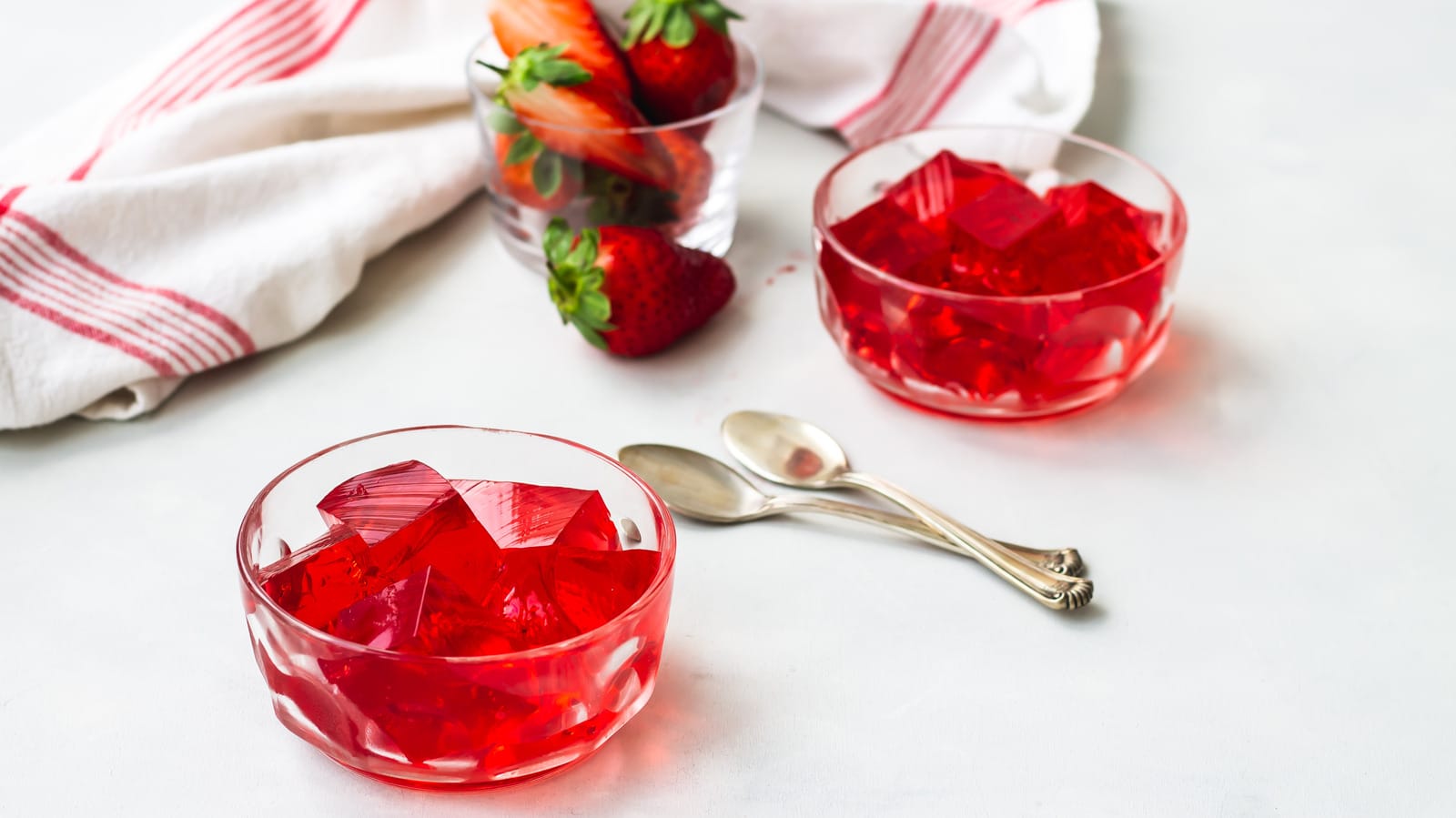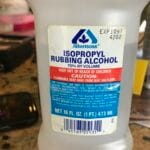Jello—that jiggly, colorful dessert—has been a staple in many pantries and refrigerators for generations. But have you ever wondered, “Does Jello actually expire?” You’re not alone! In this comprehensive guide, we’ll delve into the shelf life of Jello, exploring the nuances of different types, storage conditions, and telltale signs of spoilage.
Unraveling the Mystery: Jello Expiration Dates
Let’s address the elephant in the room (or rather, the box in the pantry): Yes, Jello can expire. However, the expiration date printed on the package is more of a guideline than a hard and fast rule. It primarily indicates when the manufacturer expects the product to be at its peak quality. With proper storage, Jello often remains safe to consume well beyond this date.
Shelf Life Showdown: Powdered vs. Prepared Jello
The shelf life of Jello largely depends on whether it’s in powdered form or already prepared. Here’s a closer look:
Powdered Jello: The Shelf-Stable Superstar
Unopened Powdered Jello: This form of Jello is incredibly shelf-stable. Stored properly in a cool, dry place away from direct sunlight and heat sources, unopened powdered Jello can last for years—potentially even indefinitely!
Opened Powdered Jello: Once you’ve opened a package of Jello powder, its shelf life decreases slightly. To maximize its freshness, transfer the remaining powder to an airtight container or resealable bag. Stored this way in a cool, dry place, opened powdered Jello can typically last for about three months.
Prepared Jello: A More Perishable Delight
Once you’ve mixed your Jello powder with water and it has transformed into that delightful, wiggly dessert, its shelf life becomes more limited.
- Refrigerated Prepared Jello: Prepared Jello should be stored in the refrigerator within two hours of preparation to slow bacterial growth. In an airtight container, it can typically last for 7 to 10 days.
Pro Tip: Adding ingredients like fruits, whipped cream, or marshmallows to your prepared Jello can reduce its shelf life, as these additions may introduce moisture and encourage spoilage.
Jello Gone Wrong: Recognizing the Signs of Spoilage
While Jello generally has a long shelf life, it’s essential to know how to identify spoilage to avoid any unpleasant surprises. Here are some telltale signs that your Jello has seen better days:
Visual Cues:
- Separation: If you notice a layer of watery liquid pooling on the surface of your Jello, this suggests that it’s starting to break down and is past its prime.
- Mold: The appearance of any type of mold—regardless of color—is a clear indication that your Jello is no longer safe to eat.
- Discoloration: While slight color variations can occur naturally, significant changes in color compared to fresh Jello could indicate spoilage.
Texture Changes:
- Slimy or Sticky Texture: If your Jello develops a slimy or sticky texture, it’s best to discard it. This change often indicates bacterial growth.
Smell and Taste:
- Off or Sour Odor: Trust your nose! If your Jello has an unusual or sour smell, it’s a strong sign that it has gone bad.
- Unpleasant Taste: While it’s generally not advisable to taste potentially spoiled food, a sharp, bitter, or otherwise “off” taste is another clear indicator that your Jello is no longer safe to consume.
Remember: When in doubt, throw it out! It’s always better to err on the side of caution when it comes to food safety.
Prolonging the Jiggle: Tips for Maximizing Jello’s Shelf Life
To enjoy your Jello at its best and minimize food waste, follow these simple storage tips:
- Unopened Powdered Jello: Store in a cool, dry place like a pantry or cupboard. Avoid exposure to heat, moisture, and direct sunlight.
- Opened Powdered Jello: Transfer to an airtight container or resealable bag and store in a cool, dry place, such as a pantry.
- Prepared Jello: Refrigerate promptly in an airtight container to prevent moisture absorption and off-flavor development.
Beyond the Basics: Additional Insights for Jello Enthusiasts
Food Waste Awareness: Did you know that food waste is a significant environmental concern? By understanding Jello’s shelf life and proper storage techniques, you can help reduce unnecessary waste. Consider getting creative with leftover Jello or incorporating it into new recipes before it goes bad.
Exploring Jello Alternatives: Interested in exploring other options beyond traditional Jello? Consider using agar-agar, a plant-based gelatin substitute, or experiment with homemade gelatin recipes using ingredients like bone broth.
Experimenting with Storage: Conduct your own small-scale experiments to observe how Jello’s shelf life is affected by different storage methods. For example, compare the longevity of Jello stored in the refrigerator’s main compartment versus the crisper drawer.
Addressing Common Myths: Help debunk common misconceptions surrounding Jello’s shelf life, such as the belief that it never expires or that it becomes unsafe to eat after a specific timeframe.
Gelatin: Unlocking More Shelf-Life Secrets
While Jello steals the spotlight, let’s not forget about plain gelatin, the versatile ingredient behind countless culinary creations.
Powdered Gelatin:
- Unopened: In its unopened state, powdered gelatin can potentially last indefinitely if stored properly in a cool, dry environment. Think of it like a culinary time capsule, ready to be awakened when the need for a jiggly masterpiece arises.
- Opened: Once you’ve broken the seal, transfer the remaining gelatin to an airtight container and store it in a cool, dry place. It should remain in prime condition for approximately three months.
Prepared Gelatin Desserts:
- Refrigeration is Key: To keep those wobbly wonders delightful, cover and refrigerate them promptly. When properly stored in the fridge, they’ll typically maintain their texture and flavor for about 2-3 days.
- Freezer Option: Did you know that you can freeze prepared gelatin desserts for longer storage? While it’s a viable option for preserving them for up to 2 months, keep in mind that freezing might slightly alter their texture.
Watch Out for These Spoilage Suspects:
Just like with Jello, it’s essential to be vigilant about spoilage when dealing with gelatin. Keep an eye out for:
- Discoloration: Any unusual shifts in color could be a red flag.
- Off Odors: If it smells funky, it’s probably a no-go.
- Mold Growth: Those fuzzy intruders are a surefire sign that it’s time to toss it.
- Texture Troubles: Whether it’s powdered gelatin becoming lumpy or prepared gelatin turning watery or overly firm—texture changes often indicate spoilage.
Remember: When unsure about the safety of your gelatin, it’s always wise to err on the side of caution and discard it. Food poisoning is a gamble you don’t want to take.
Top Tips for Gelatin Storage Success:
- Powder Power: Store powdered gelatin in an airtight container in a cool, dry place to protect it from moisture and temperature fluctuations.
- Refrigerate Right: As soon as your gelatin dessert is ready, cover and refrigerate it to slow down bacterial growth and maintain its freshness.
The Bottom Line:
Gelatin, like many pantry staples, can last a surprisingly long time when stored correctly. By understanding the nuances of different types of gelatin, proper storage techniques, and recognizing the warning signs of spoilage, you can confidently create culinary masterpieces while prioritizing food safety.
Now that you’re armed with this comprehensive Jello and gelatin knowledge, you can enjoy these versatile ingredients with confidence, knowing how to maximize their shelf life and savor every jiggly, delicious bite.
If you’re curious about the shelf life of other household products, you might be surprised to learn that even isopropyl alcohol expires over time. And for those interested in the fascinating world of insects, did you know that locusts bite? They have powerful mandibles designed for chewing through vegetation.
- Unlock Water’s Symbolism: A Cross-Cultural Exploration - April 20, 2025
- Identify Black and White Snakes: Venomous or Harmless? - April 20, 2025
- Unlocking Potential: Origins High School’s NYC Story - April 20, 2025















